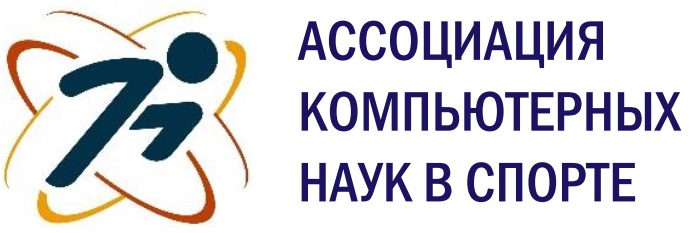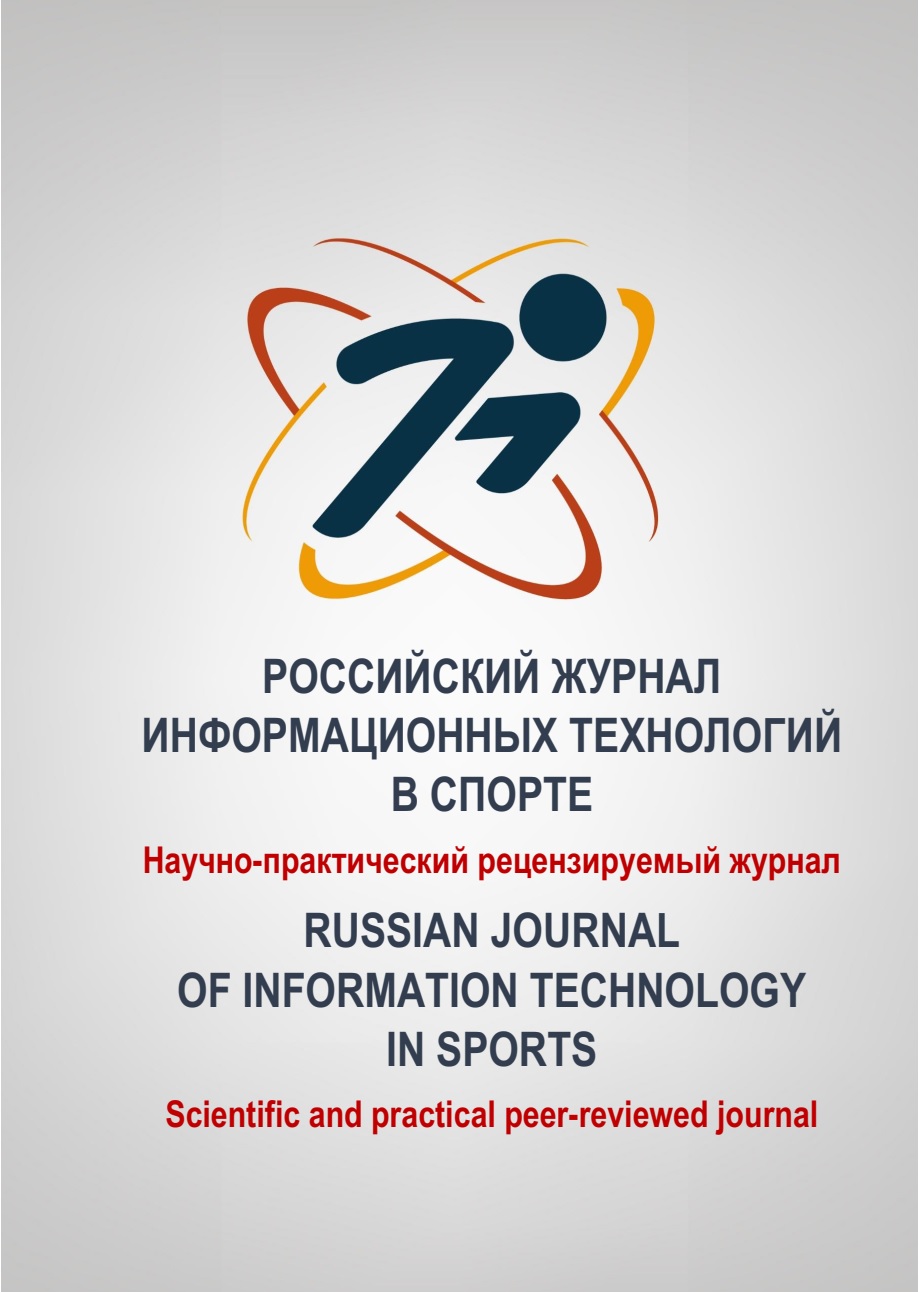Federal Research Center for Original and Prospective Biomedical and Pharmaceutical Technologies (Laboratory of Rehabilitation and Sports Psychophysiology, researcher)
employee
Podolsk, Russian Federation
Russian Federation
VAK Russia 5.8.4
VAK Russia 5.8.5
VAK Russia 2.2.12
UDC 355.233.22
UDC 00
CSCSTI 77.00
CSCSTI 20.00
Russian Classification of Professions by Education 09.00.00
Russian Classification of Professions by Education 32.00.00
Russian Classification of Professions by Education 44.00.00
Russian Library and Bibliographic Classification 3
Russian Library and Bibliographic Classification 75
Russian Trade and Bibliographic Classification 5
Russian Trade and Bibliographic Classification 7
BISAC COM018000 Data Processing
BISAC COM089000 Data Visualization
BISAC COM032000 Information Technology
BISAC BIO016000 Sports
Relevance. Scientific research, coaching practice, and athletic training necessitate real-time monitoring of key parameter such as the anaerobic component of exercise. While this metric can be derived from heart rate data, there is currently a lack of comprehensive domestic software solutions capable of automating these calculations and delivering immediate post-exercise results. Aim. To develop an algorithm for calculating and displaying the anaerobic dose of physical load in real time, along with a prototype computer program for assessing physical performance parameters based on heart rate data obtained during standardized exercise tests. Methods. The algorithm development utilized the standardized PWC170 test conducted via step-ergometry as a primary validation protocol, though the proposed methodology demonstrates extensibility to alternative exercise testing modalities. HR parameters were derived from continuous heart rate monitoring using the Polar H10 chest-worn transmitter, with real-time data acquisition facilitated through Bluetooth protocol. Implementation was achieved through a client-side web application architecture utilizing JavaScript (ECMAScript 6+) and HTML5 standards. The system demonstrates efficient computational performance, generating and displaying a comprehensive panel of 9 exercise load parameters immediately upon test termination. This near-instantaneous analytical capability provides significant advantages for real-time training monitoring and immediate physiological assessment. Results. The study successfully developed an innovative algorithm for real-time assessment of anaerobic exercise load components using heart rate data. This computational approach enabled precise quantification of anaerobic contribution through advanced processing of cardiometric parameters. The software solution generates 9 key performance metrics immediately after test completion, with particular focus on anaerobic load evaluation The prototype has been made publicly available as a web application compatible with standard heart rate monitors, demonstrating practical utility for sports science applications (https://github.com/Denisqe/box). Conclusions. The developed software enables real-time heart rate data processing, instantly calculating exercise parameters post-test. This enhances training monitoring efficiency and decision-making while maintaining scientific accuracy, offering a practical tool for sports science applications. The solution combines methodological rigor with operational speed, providing reliable physiological assessments. Its immediate feedback and precision make it valuable for both research and athletic practice.
anaerobic dose of exercise, program prototype, algorithm, physical performance parameters, pulse debt accumulation intensity, specific intensity of physiological costs
1. Banister E.W., Calvert T.W., Savage M.V. A systems model of training for athletic performance. Australian journal of science and medicine in sport, 1975, 7 (3), pp, 57-61.
2. Karvonen M.J., Kentala E., Mustala O. The effects of training on heart rate: a longitudinal study. Annales Medicinae Experimentalis et Biologiae Fenniae, 1957, (35), pp. 307–315. PMID: 13470504.
3. Son'kin V.D., Tambovceva R.V. Development of muscular energy and working capacity in ontogenesis. Moscow: LIBROCOM Book House, 2018, 368 p. (in Russ.) ISBN: 978-5-397-01708-4.
4. Kozlov A.V., Bleer A.N., Levushkin S.P., Son'kin V.D. The relationship between the intensity of pulse debt accumulation and the rate of oxygen demand formation and lactate accumulation in the blood when performing extreme cyclic exercises of various durations. Sports medicine: science and practice, 2022, 12(3), pp. 43–50. (in Russ.) DOI: https://doi.org/10.47529/2223-2524.2022.3.2 EDN: https://elibrary.ru/https://www.elibrary.ru/wljrzn
5. Kozlov A.V., Vavaev A.V., Yakushkin A.V., Laptev A.I., Yurikov R.V., Son'kin V.D. The specific intensity of physiological costs during cyclic operation of various capacities. Human Physiology, 2022, 48(1), pp. 18–25. (in Russ.) DOI: https://doi.org/10.31857/S0131164622010076 EDN: https://elibrary.ru/https://www.elibrary.ru/pbjfhh
6. Impellizzeri F.M., Shrier I., McLaren S.J., Coutts A.J., McCall A., Slattery K., Jeffries A.C., Kalkhoven J.T. Understanding Training Load as Exposure and Dose. Sports Medicine, 2023, (53), pp. 1667–1679. https://doi.org/10.1007/s40279-023-01833-0 EDN: https://elibrary.ru/YYVVBY
7. Maksimov M.N. Quantification of training loads by pulse parameters of exercises in sports swimming. Abstract of dissertation of the Candidate of Pedagogical Sciences:13.00.04. Theory and methodology of physical education, sports training, recreational and adaptive physical education, 2004. 21 p. (in Russ.) EDN: https://www.elibrary.ru/njsmjx
8. Runenko S.D., Talambum E.A., Achkasov E.E. Research and assessment of the functional state of athletes. Textbook for students of medical and pediatric faculties of medical universities. Moscow: Profil – 2C, 2010, 72 p. (in Russ.) ISBN: 978-5-903950-06-5 EDN: https://elibrary.ru/IHWDAH
9. A prototype of a computer program for the rapid determination of the anaerobic dose of physical activity based on heart rate monitoring data [Electronic resource]. URL: https://github.com/Denisqe/box (accessed: 08.06.2025)















